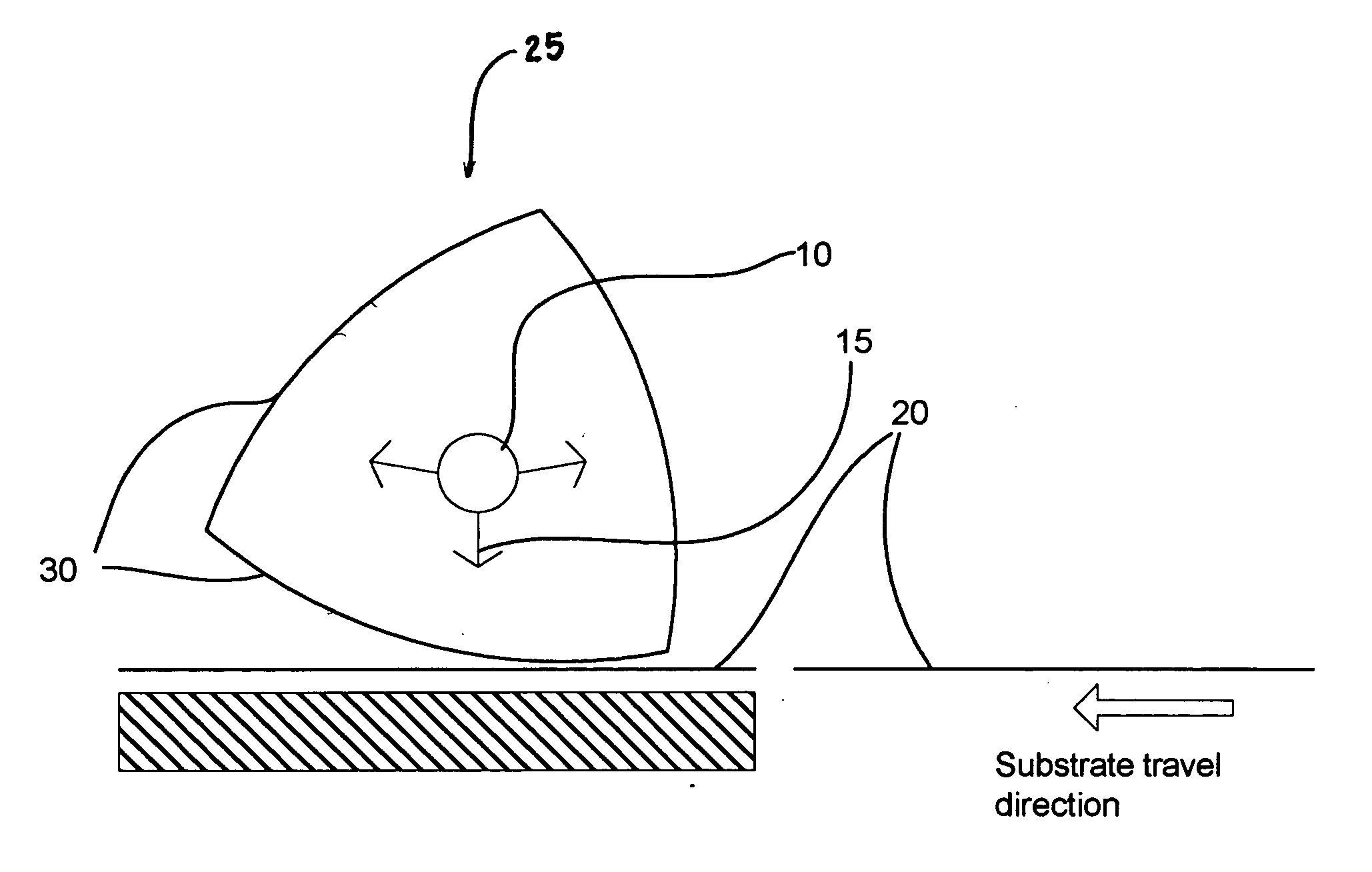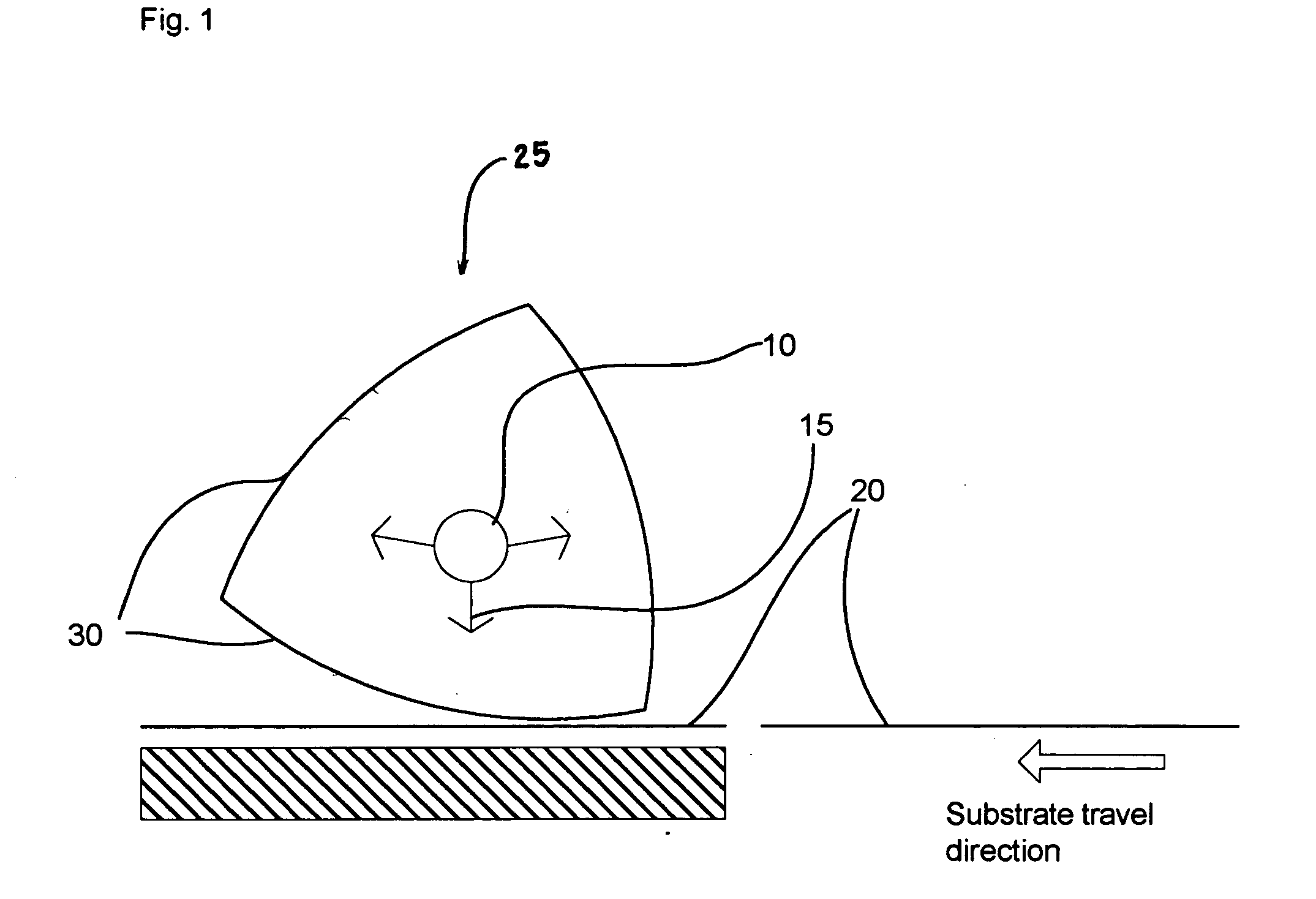Printing apparatus and device manufacturing method
a printing apparatus and manufacturing method technology, applied in the direction of liquid/solution decomposition chemical coating, decorative arts, solid/suspension decomposition chemical coating, etc., can solve the problem of limited speed of application of vertical stamps, and achieve the effect of less expensive creation and us
- Summary
- Abstract
- Description
- Claims
- Application Information
AI Technical Summary
Benefits of technology
Problems solved by technology
Method used
Image
Examples
embodiments
[0022]FIG. 1 depicts substrates 20 being introduced into the patterning device. The curved member 25 includes a patterning stamp 30 on its surfaces, which contains a desired pattern. The curved member 25 is rolled over the substrates 20. Each patterning stamp 30 on the surfaces of the curved member 25 are configured to be the correct size to print the desired pattern onto a single substrate 20. As the patterning stamp 30 rolls over a substrate 20, the illumination means 10 illuminates the substrate via the patterned surface 30.
[0023] Exposure radiation 15 is the illumination radiating in the correct direction in order to set the resist via the stamp pattern. The resist on the substrate 20 sets where the pattern allows the exposure radiation 15 to be transmitted through the curved member 25 wall. The system, in some ways, is analogous to a newspaper printing system except that instead of a round cylinder, a Wankel motor-shaped cylinder is used. In this manner, the surfaces of the cu...
PUM
| Property | Measurement | Unit |
|---|---|---|
| wavelength | aaaaa | aaaaa |
| wavelength | aaaaa | aaaaa |
| wavelength | aaaaa | aaaaa |
Abstract
Description
Claims
Application Information
 Login to View More
Login to View More - R&D
- Intellectual Property
- Life Sciences
- Materials
- Tech Scout
- Unparalleled Data Quality
- Higher Quality Content
- 60% Fewer Hallucinations
Browse by: Latest US Patents, China's latest patents, Technical Efficacy Thesaurus, Application Domain, Technology Topic, Popular Technical Reports.
© 2025 PatSnap. All rights reserved.Legal|Privacy policy|Modern Slavery Act Transparency Statement|Sitemap|About US| Contact US: help@patsnap.com


